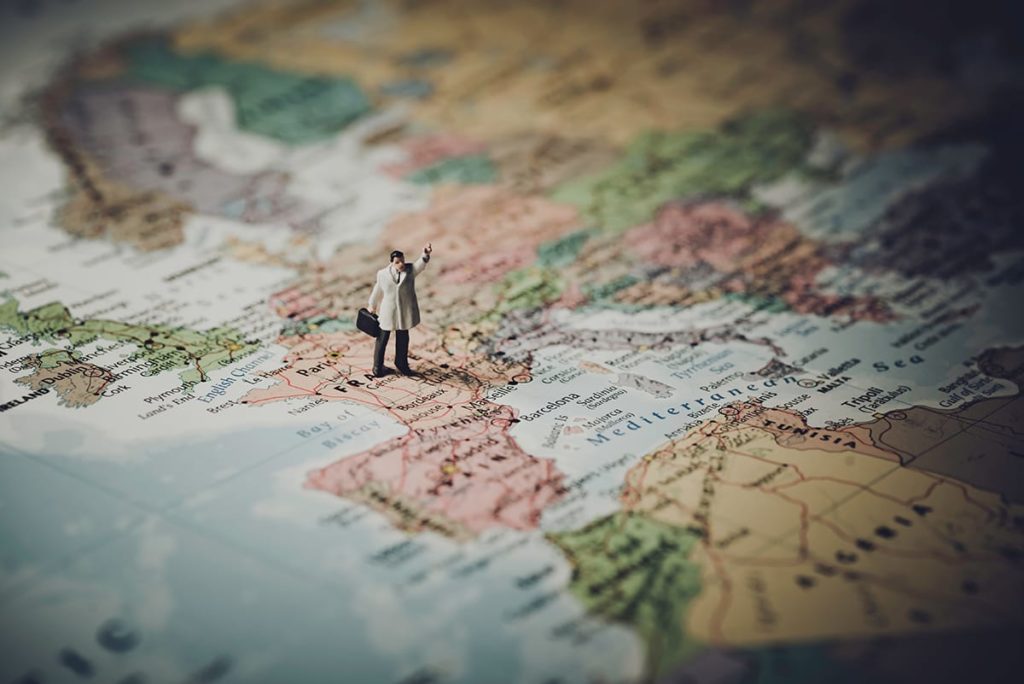
11 Tips When Planning a Business Trip for Your Colleagues or Your Boss
After all, there are lots of variables to keep in mind, details to comb through, reservations to create and schedules to align. And even after all that is done, you still have to contend with the possibility of problems popping up while your traveler is on the move.
As a travel manager, the best thing you can do is to be as organized as humanly possible beforehand so that you can be free to solve problems if and when they arise.
How can you do that?
Planning a business trip for your boss
1. Make note of their usual preferences
When planning a business trip for your boss, you want to get faster and better at it every time. Don’t rely on your memory (hate to break it to you, but sometimes it’s wrong). Instead, take notes on your boss’s usual preferences, such as rushing for flight connections versus having layovers with plenty of cushion. That way, you can reduce some of the back and forth communication required for each trip.
2. Help them prioritize the most important parts of their trip
When your boss is traveling, there are likely just a few very key things they need to accomplish. Understand what are the goals for this trip, whether that’s attending a single meeting or staffing a new office in a different country. Once you know the goals of the trip, organize the other details around it so that nothing gets in the way.
3. Take care of any extras
Aside from the key purpose of the business trip, your boss might also have some extra goals that they want to accomplish. Maybe they want to stick to their exercise routine while away. Maybe they want to finish a slide deck for an upcoming presentation. Or maybe they want to bring their spouse along for the trip and have a day to sight see.
Ask your boss about the things they’d like to do or accomplish during the trip, so you can help organize these things, provide recommendations, or at the very least keep their calendar clear.
4. Create a business trip itinerary
The last document in this section is a business trip itinerary, or a summary of all of the trip’s details in one place. This will save both you and your traveler the time and frustration of going through multiple documents and emails to find the information that matters.
When creating these documents, it helps to think chronologically so that you can put yourself in your traveler’s shoes and think clearly about what information is needed. And when you’re done, create not only electronic copies, but also hard copies. This cuts out any possibility that a dead smartphone or absence of internet throws your traveler off.
Planning a business trip for your colleagues
The same care and attention to detail your travel planning receives is the same your employees should enjoy as well.
5. Empower travelers to book for themselves
Most business travelers prefer to book a business trip for themselves, just like they would when booking a vacation, rather than have to go back and forth with someone over every little detail. Use travel management software that includes company polices so that employees can book what they want within policy. This saves time for everyone, plus travelers get the itinerary and accommodation they want.
6. Put everything in one place
There are a lot of details when it comes to planning a business trip. You should do your best to put everything in one place. When booking with one approved company travel management software, travelers can login and see all of their upcoming itineraries.
Most colleagues want everything to be digital, but if that’s not the case for your colleagues, then make a travel folder. In the travel folder, enclose the printed business travel itinerary and confirmations along with envelopes for travel receipts and any important travel or business documents they’ll need at their destination.
7. Purchase any needed supplies in advance of the trip
Think of your traveler as a mobile office representing your company domestically and abroad. As such, make sure to top up their tools: business cards, batteries, basic supplies, and other necessary consumables.
8. Give the traveler a trip checklist
Create a traveler checklist to hand to your traveler before the trip. This will ensure your traveler doesn’t forget all the essential cords, adapters, flash drives, devices — anything they’ll possibly need!
If your traveler is catching an international flight, put together a paper dossier containing important information about their destination. Add details like currency, time zone, the local embassy’s contact information, tips on local laws and culture, common diseases, and whether or not their phone plan covers international travel. Information like this goes a very long way.
9. Save traveler’s contact information
A traveler contact sheet is essential. It’s a single document that include all of the employee’s home and professional contact information along with standard details like name, title, ID number, etc. Additional items like airline and hotel preferences, meal requests and passport details will all make this document much stronger.
10. Create a travel planning checklist template
Another useful document is a travel planning checklist. On it goes the details for every flight, ground transportation, hotel booking, dining and entertainment reservation, and meeting or event detail, along with plenty of room for anything else. Use this to keep on top of the little details that get easily lost in the shuffle.
One of the primary motivations for any travel manager planning a business trip is making sure no detail is left unaccounted for. No travel manager wants to receive a call from a desperate employee about incorrect ticket dates or problems checking-in because of mistyped information, for instance. That’s why a set of templates and checklists will do wonders to prevent mistakes and oversights from occurring.
11. Debrief after the business trip
Debriefing after a business trip is just as important as the preparation. At this point, there are many aspects of the trip to go over that offer many benefits to a constantly evolving business.
- When your traveler returns, retrieve their travel folder. Check for receipts, make any important notes, and then apply for reimbursements as soon as possible.
